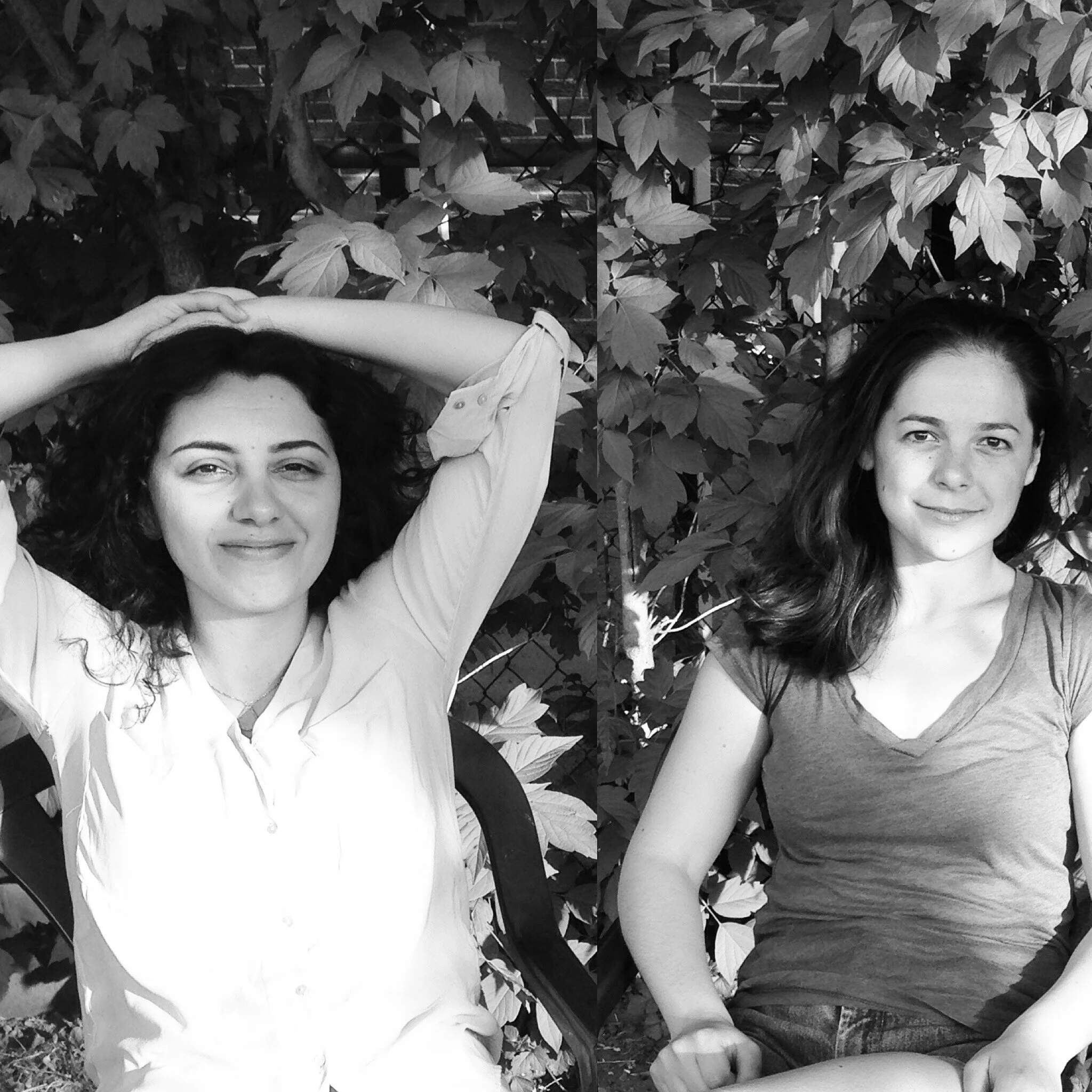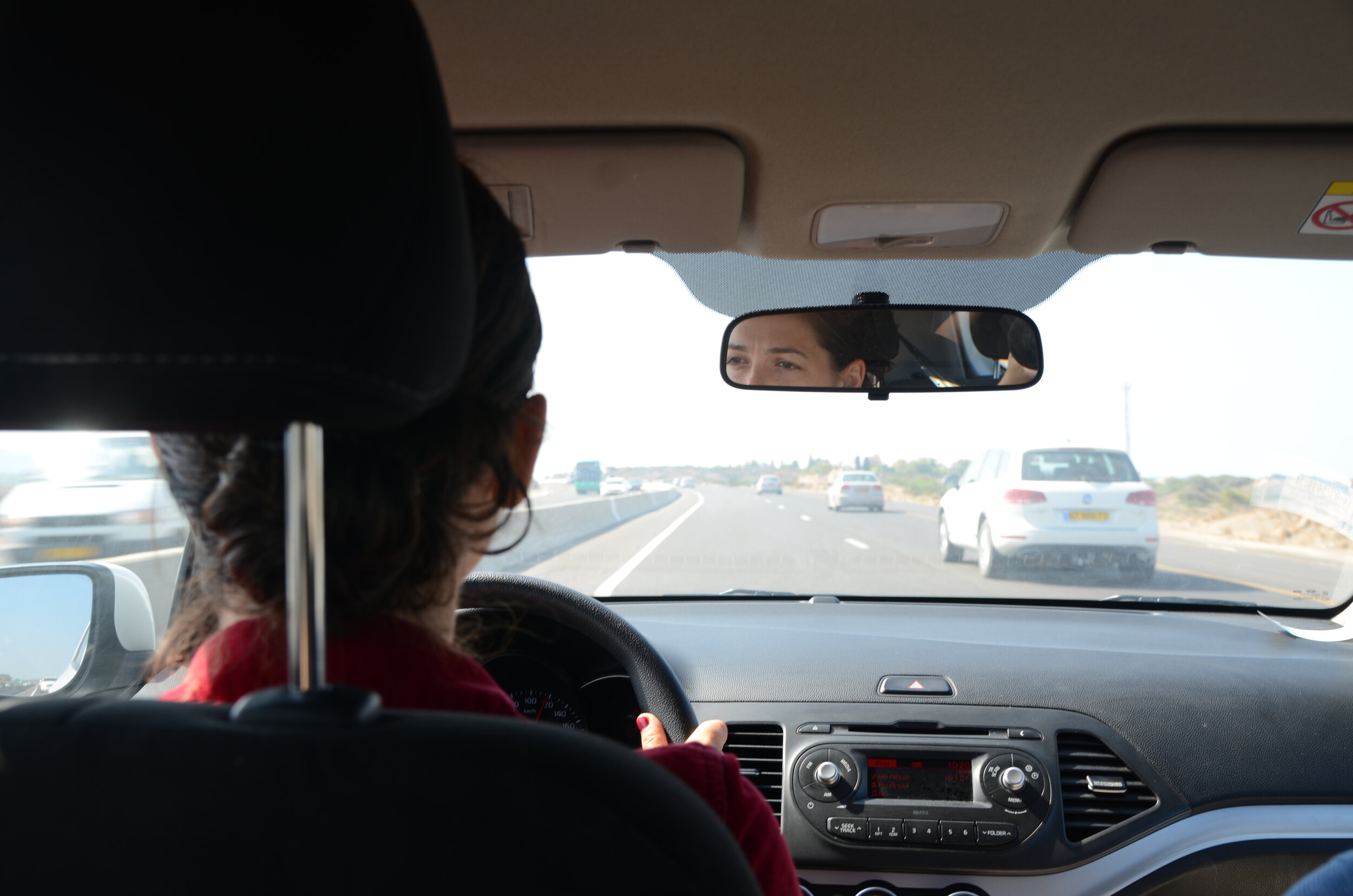
Rimah and I are going to Netanya to research a play we’re writing together. Netanya is a city on the western coast of what is currently called Israel. My great-grandfather bought a house there in 1948, when it was still called Palestine. He never lived there, but he would visit every winter. He always wanted to move there. Our family sold it when he died, long before I was born. Rimah and I are imagining that her grandparents fled a house in Netanya during the Nakba, and that this is the same house my great-grandfather bought there in 1948. Of course, this isn’t exactly true. But we’ve decided to create a story that is both true and false. A fictional documentary. An imaginary landscape we are remembering together.
If I stand on the top of Mount Ebal in Nablus at night, if the sky is clear, I can see the lights of the city of Netanya. These lights, they cover the ruins of the Palestinian village of Umm Khalid. If it wasn’t for this play, I wouldn’t be going there. I wouldn’t be taking this complicated trip to a place that will take me a few hours to reach, a place that should be half an hour’s drive from Nablus without the wall.

I’m traveling with my brother Will. We rent a car in Jerusalem and pick up Rimah and her husband Ashraf. They tell us to meet them at the Tayelet, a huge promenade near the edge of a Palestinian neighborhood called Silwan, where Ashraf is from. When I look it up, I read this promenade was designed by famous landscape architects. Built on the site where Jesus was betrayed by Judas, the same place where the Six-Day War erupted. Using stone quarried from local hills, the promenade is flanked by olive trees and wheat fields that recall the groves of the villages that used to be here. The promenade was designed to instill a sense of calm, of peace, of “less tension”. New plans to develop the promenade are now horrifying the landscape architecture community, who say the “mountain of slides” the city is threatening to build will be a “Disneyfication” of this historic site.
I can’t open my eyes for the camera. Ashraf is taking a selfie of us with the golden shining dome behind us at the Tayelet. Ashraf tells me about the time he spent in this neighborhood as a child. I ask him to imagine what he was doing when I was born in 1980. He was six, he used to play in this neighborhood. Maybe he was covered in dust after a soccer game, maybe he was begging his friend to give him a turn on the bicycle. While we’re imagining what he would have been doing, Natasha and her brother Will pull up in a rental car.
We head out of Jerusalem on our way to Netanya. I’m a new driver and this is my first time on a highway. It’s huge and the speed limit is 120 km/hr. I’m not used to driving this fast. I’m terrified. Rimah and Ashraf chant “Natasha, Hareefeh,” which means “Professional Natasha,” as I clutch the steering wheel and keep my foot on the gas, desperately trying to listen to directions from Waze, a GPS tool formerly called FreeMap Israel, now owned by Google.
For me directions are before the wall or behind the wall, past the checkpoint or before the checkpoint. This is what navigating is for a Palestinian.

I see rolling green hills to one side, the ocean on the other. Red tiled roofs and stone buildings popping up in clusters of villages. I don’t even think we’re near the wall. Somehow the conflict feels far away here; it’s like a beautiful movie. A road trip with friends. Music playing and Ashraf and Waze helping me hold my nerve and find Netanya.
I never thought I would go back there. This was once the closest beach by car from Nablus. It is now the farthest, because we have to go south to Jerusalem, cross the wall at the Qalandia checkpoint, then travel north again to be in Netanya. I never pictured this happening, driving there with my friends from Canada and my lover from Jerusalem.
As we get closer there are more and more box stores: Ikea, North Face, Best Buy. It reminds me of the vast stretches of suburbia you have to drive through before you get to any city in Canada, except here, there are palm trees everywhere.
We get to the city hall to try and find a record of the house my great-grandfather bought in Netanya in 1948. The house he hoped to live in but never did. We speak to an old man at the front desk and tell him my story. He tells us he’s very happy to see beautiful Jewish people coming home, but we really have to go to the Tabo, the land registry, and it will be closed for the day. We should come back tomorrow. Ashraf says yom tov, which means “have a nice day” in Hebrew. I want to say “thank you” in Hebrew, but instead I say shukran which is “thank you” in Arabic, because I’ve been traveling through the West Bank and it’s become a habit. The old man’s smile fades. He looks very confused. We leave quickly, laughing. Rimah says, “This will be good for our play.” Will says, “Where can we find some food?”
My family never fled Umm Khalid in 1948. This part of the play will be fiction, inspired by someone else’s story. My family lived in Tubas, a village near Nablus in the West Bank. And my family did run from our home; but it was in 1967, during the Six-Day War, when Israel occupied the whole of Palestine. Luckily my grandfather decided to go back home halfway through their journey to Jordan. I try to imagine what it feels like to be a Palestinian from Umm Khalid. Where would I be?
A lot of the cafe signs are in French, with drawings of baguettes and croissants. Someone told us that Netanya is the Little Paris of Israel: lots of Jews immigrated here from France and French-speaking countries like Morocco and Tunisia. We eat a falafel sandwich that has an egg in it and then we decide to head to the beach.
I expected Netanya to be cleaner. It is a coastal town but obviously the people who lived here didn’t pay attention to that. It was rushed. I miss the culture that comes out of the feeling of belonging. The character of a city that’s been built over time. I see visual noise and red heat. I smell dead fish.
When I was little, my family used to go to the east coast of Canada during the summer. We would drive for 16 hours to get to a tiny shack on the top of a cliff. My mother would let me walk down the wooden stairs and play in the ocean by myself. She could see me from up high and she knew the water was too cold to be dangerous. I was alone, free, covered in sand and salty water.
I’ve been here before. I only remember my five-year-old feet half floating in the salty water, ten centimetres deep, not more, but it was enough to give me feelings of pleasure and discovery. After this trip I never saw the sea again, except for on a screen.



